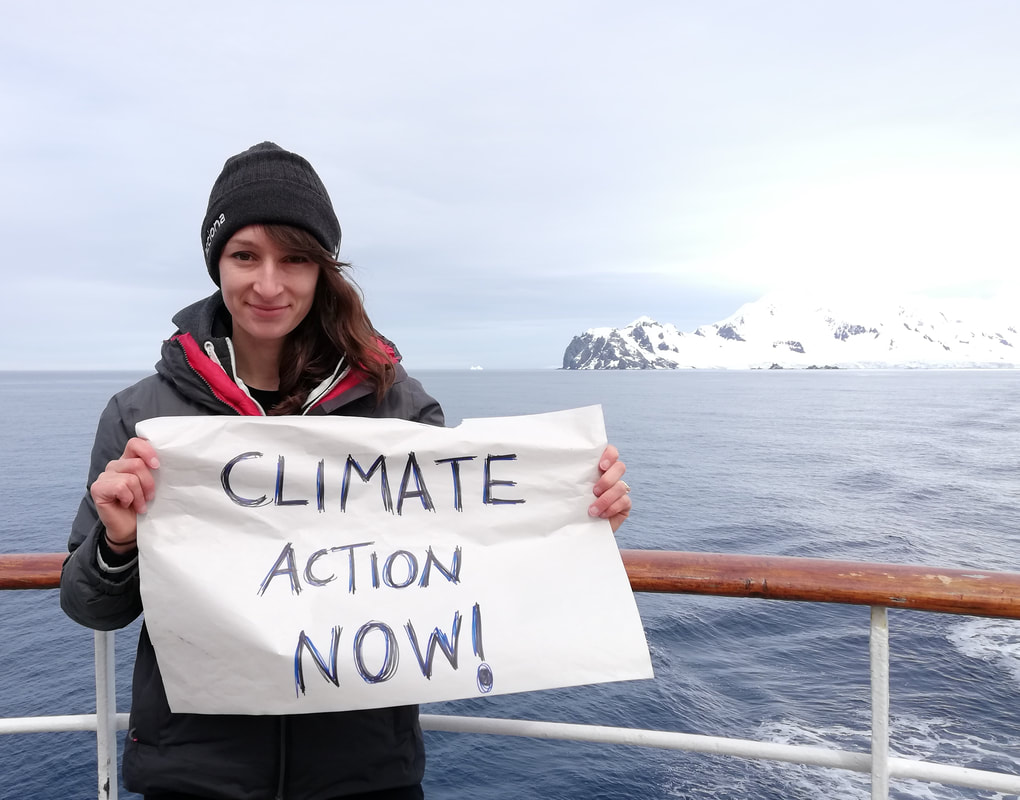?Climate change is impacting Antarctica and that has global implications. Antarctica is the coldest, windiest and driest continent on Earth. It is a vast continent that has challenged explorers, captivated scientists and inspired dreamers through the centuries. It is a place...
?Climate change is impacting Antarctica and that has global implications. Antarctica is the coldest, windiest and driest continent on Earth. It is a vast continent that has challenged explorers, captivated scientists and inspired dreamers through the centuries. It is a place of beauty and mystery, covered with ice kilometres deep and home to some of the world’s most incredible creatures – orcas, sealions, penguins and whales to name a few.
Antarctica is also one of the regions of the world where the impacts of climate change are most apparent and pronounced. Temperatures here are rising double the rate of the global average. As oceans and air temperatures become warmer, the ice-covered land melts.This is raising sea levels, and 1m sea level rise displaces 100 million people.With huge global population numbers living along coastlines or in low lying inland regions, rising sea levels poses serious risk to people and ecosystems. Phytoplankton – the underrecognized microscopic lungs of the earth that live underneath sea-ice – take up 50% of the CO2 we produce, and give us half the oxygen we breath. Small changes in Antarctica have big changes to the rest of the planet.
Antarctica is sometimes referred to as the thermostat of the world. Atmospheric and ocean temperatures are determined by what goes on at the bottom of the globe. Weather systems experienced in Australia are driven by the global circulation systems. Rainfall and temperatures over Australian farmland for instance, are interlinked by the conditions and changes in the southern white wilderness.
It is this concern of rapidly changing conditions on her family’s outback sheep station that took Anika Molesworth from Australia’s arid inland to Antarctica. The climate crisis is of global proportions and is impacting the most remote corners of the globe. The drought ravaged land of far western NSW is suffering in >40oC temperatures and frequent dust-storms. The projections for Anika’s home are dire – by the time Anika is the average age on an Australian farmer her family’s sheep operation will have ceased to operate – the increase in temperature and reduced rainfall will have changed this fragile region irreversibly.
Anika went to Antarcticaas part of a 12-month program with a cohort 100 women in STEMM (science, technology, engineering, mathematics and medicine) fighting for the sustainability of our planet.She will use her new knowledge and networks to develop her strategic and communication capabilities in order to influence policy and decision-making on climate action. Amplifying the voice of farmers who are grappling with the harsh realities of climate change today is a passion of hers. Anika is particularly interested in highlighting the issues of climate justice and intergenerational equity of the next generation of food producers around the world. For her, climate change is personal.
Australian farmers are incredibly vulnerable to climate change, and the effects are already being felt on communities across the country. Extreme weather events, such as droughts, floods and heatwaves are reducing the productive capabilities of our country’s food and fibre producers which has a far-reaching ripple effect on rural mental health and social cohesion. Despite the heart-retching impacts already being experienced, Anika is convinced that that greatest challenge our world has ever faced can be addressed with leadership and collective action. As someone who has worked to understand the global through to local implications of climate change she knows a vibrant and productive farming future is possible – if climate change is tackled in line with what the science recommends. That means putting in place policies and strategies to reduced GHG emissions, transition Australia’s energy productions from fossil fuels to renewables, and implement carbon capture and storage solutions.
Antarctica is also one of the regions of the world where the impacts of climate change are most apparent and pronounced. Temperatures here are rising double the rate of the global average. As oceans and air temperatures become warmer, the ice-covered land melts.This is raising sea levels, and 1m sea level rise displaces 100 million people.With huge global population numbers living along coastlines or in low lying inland regions, rising sea levels poses serious risk to people and ecosystems. Phytoplankton – the underrecognized microscopic lungs of the earth that live underneath sea-ice – take up 50% of the CO2 we produce, and give us half the oxygen we breath. Small changes in Antarctica have big changes to the rest of the planet.
Antarctica is sometimes referred to as the thermostat of the world. Atmospheric and ocean temperatures are determined by what goes on at the bottom of the globe. Weather systems experienced in Australia are driven by the global circulation systems. Rainfall and temperatures over Australian farmland for instance, are interlinked by the conditions and changes in the southern white wilderness.
It is this concern of rapidly changing conditions on her family’s outback sheep station that took Anika Molesworth from Australia’s arid inland to Antarctica. The climate crisis is of global proportions and is impacting the most remote corners of the globe. The drought ravaged land of far western NSW is suffering in >40oC temperatures and frequent dust-storms. The projections for Anika’s home are dire – by the time Anika is the average age on an Australian farmer her family’s sheep operation will have ceased to operate – the increase in temperature and reduced rainfall will have changed this fragile region irreversibly.
Anika went to Antarcticaas part of a 12-month program with a cohort 100 women in STEMM (science, technology, engineering, mathematics and medicine) fighting for the sustainability of our planet.She will use her new knowledge and networks to develop her strategic and communication capabilities in order to influence policy and decision-making on climate action. Amplifying the voice of farmers who are grappling with the harsh realities of climate change today is a passion of hers. Anika is particularly interested in highlighting the issues of climate justice and intergenerational equity of the next generation of food producers around the world. For her, climate change is personal.
Australian farmers are incredibly vulnerable to climate change, and the effects are already being felt on communities across the country. Extreme weather events, such as droughts, floods and heatwaves are reducing the productive capabilities of our country’s food and fibre producers which has a far-reaching ripple effect on rural mental health and social cohesion. Despite the heart-retching impacts already being experienced, Anika is convinced that that greatest challenge our world has ever faced can be addressed with leadership and collective action. As someone who has worked to understand the global through to local implications of climate change she knows a vibrant and productive farming future is possible – if climate change is tackled in line with what the science recommends. That means putting in place policies and strategies to reduced GHG emissions, transition Australia’s energy productions from fossil fuels to renewables, and implement carbon capture and storage solutions.





.png)




